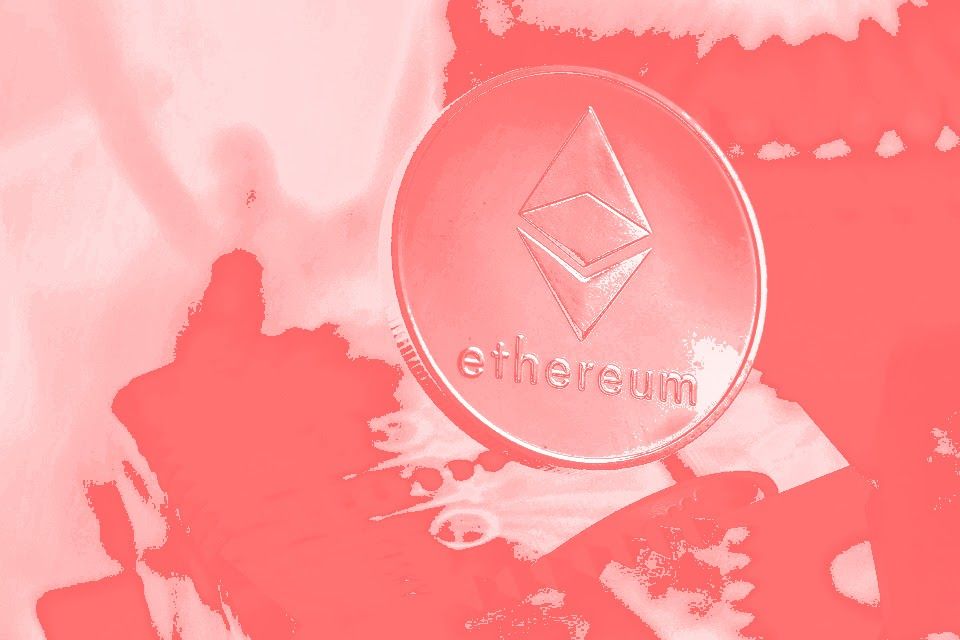How to build your on-chain resume

 Cartesi - Build app-specific rollups with Web2 tooling!
Cartesi - Build app-specific rollups with Web2 tooling!
Dear Bankless Nation,
You want a job in crypto? Then start building your on-chain resume.
An on-chain resume gives you:
- Hands-on experience using DeFi protocols and applications.
- Immersion and understanding of the the ecosystem
- A verifiable reputation—you can’t lie on your on-chain resume
We talked about this in February, when Brian made the case that the future of work is on-chain and your Ethereum address is the best attestation of your skills in the cryptoeconomy.
I’ve seen people get hired based of their DegenScore or because they’ve got their proposal passed on-chain through active governance participation.
These are the skills needed in the crypto renaissance. Crypto-native companies want to see you in the trenches. They want to see you using crypto everyday.
Your Ethereum address is the best way to prove it.
There’s no shortage of opportunity in this new frontier.
So let’s build your on-chain resume. William shows us how.
- RSA
P.S. Then take a look at the new Bankless Jobs board and see who’s hiring…I hear they like crypto natives at Arbitrum and PoolTogether.
How to build your on-chain resume
This is not just how to build a solid resume.
Your Ethereum wallet is your on-chain crypto resume. It’s a way for you to showoff that you’re a true crypto native and the reason why you get a job at a crypto fund or DeFi protocol. And guess what? There’s no lying on it. So if you’re looking for a job in crypto, it’s crucial that you get your on-chain resume into tip-top shape.
Accordingly, this Bankless tactic will show you a range of Web3 tasks you can undertake—from easy to advanced—to build up a superb on-chain resume.
- Goal: Learn how to build a good on-chain resume & cultivate the skills it needs
- Skill: Varies from easy to advanced
- Effort: Varies
- ROI: Limitless opportunities in the growing Web3 ecosystem
How to build your on-chain resume
The total value locked (TVL) in DeFi nearly touched $100 billion earlier this year. Amid this blooming financial relevance, top DeFi projects have started to rake in prodigious on-chain cash flow that would make TradFi people do double takes!
Moreover, last week we received confirmation that over $2.5 billion worth of NFTs have been sold since the start of 2021. The figure, and how fast it was reached, suggest NFTs are going mainstream before our very eyes 👀
So DeFi and NFTs, not to mention DAOs, are among the brightest stars of this rising Web3 movement and are presently unlocking tons of economic potential. And it’s Ethereum that’s the workhorse responsible for making most of these incredible new economic opportunities possible, open, and global.
So if you’re interested in going deeper into the Web3 ecosystem, know there’s a non-trivial chance this space may continue to swell in size and opportunity in the years ahead. Meaning, if you prepare well and build up your Ethereum and crypto chops now, you’ll actualize specialized skills that can make your expertise extremely valuable in the future.
Yet to dive into this arena, you don’t have to draft up a resume of your work history and cold email dozens of organizations to see if anything sticks. In the cryptoeconomy, your Ethereum wallet is your best resume.
And depending on how you use your wallet, it can give you access to all sorts of considerable future perks!
Advantages of future-prepping your wallet
Ethereum is a public blockchain, so you can build a crypto-native resume for posterity simply by facilitating your Web3 activities through a public-facing wallet of your choice.
The advantages for doing so are numerous. For example, taking time to prepare your wallet can help you:
- Build up your Web3 skill tree so you have all the prerequisite knowledge to quickly learn, and adapt to, new DeFi, NFT, and DAO innovations as they arrive.
- Get in line for lucrative token airdrops by experimenting with — and thus bootstrapping — dApps in their earliest days.
- Collect choice NFTs that may become valuable digital collectibles in the future and demonstrate your curation skills.
- Land traditional or DAO-driven jobs across the most exciting Web3 projects.
The on-chain privacy balance
Before going any further, it’s worth pointing out that there’s a natural tension between maintaining an attractive on-chain resume and maintaining your personal financial privacy. (See this article and this one for some privacy tips)
In other words, recognize that any wallet you build up as your resume will likely be public-facing to some extent. So you should approach it intentionally and only after a good bit of consideration.
The good news is you don’t have to overplay your hand. You can just set up a dedicated “resume” wallet and facilitate as much activity through it as you desire. You don’t have to use your main address or anything like that. You can, and some people do. At the end of the day, it’s up to you to strike the privacy balance that’s right for you personally.
All that said, security is another big consideration here. If you’re trying to build up an on-chain resume, you need to make sure you’re doing it through a wallet you have overwhelming assurances will remain under your control for the long-term! So hardware wallets, smart wallets, and combos thereof are definitely your friends here.
Don’t make it easy for the blackhats!!
🦷 Read up on “How to protect your ETH wallet from privacy cavities” to level up on managing your public vs. private wallets.
A Web3 resume to-do list
Alright, let’s create some crypto resumes shall we?
Ethereum’s Web3 ecosystem is decentralized, so it’s not like there’s some definitive list of activities to go by when it comes to building up your on-chain profile. Yet there are a lot of different Web3 activities you can participate in right now, some easier, some much more complicated. Below, I’ve curated a selected list of such on-chain activities that will help make your crypto resume look solid.
I’ve categorized the opportunities based on Easy, Intermediate, or Advanced.
✍️ Writer’s Note: One last thing: you should always approach anything in crypto at your own personal pace. Just because there’s this list of potential resume-building activities doesn’t mean you have to race through them all as quickly as possible. Take your time, try out what seems fun or interesting in moderation. Slow and steady wins this journey!
Easy
- Trade on Uniswap— Say you want to trade a small DeFi token that isn’t listed on any centralized crypto exchanges yet. That token’s likely tradable on Uniswap, so consider getting comfortable trading long-tail assets on the protocol.
- Trade on Matcha — Matcha is a decentralized exchange aggregator that fetches you the best prices across all DEXes. If you’re looking to get tokens into your wallet in easy fashion, you can’t ignore Matcha.
- Open a Maker Vault — Maker is the OG DeFi credit platform. Deposit some ETH in, borrow some Dai, and get familiar with what it means to bank yourself!
- Lend on Aave or Compound — Once you have some tokens ready to rip, consider loaning them out on lending protocols like Aave and Compound. You earn interest all the while and can
- Mint an NFT / collect an NFT — Mint an NFT on do-it-yourself NFT platforms like OpenSea, SuperRare, or Rarible. Then buy someone else’s NFT on the open market. You don’t have to break the bank here, just find something you like and that works for you.
- Save with PoolTogether — PoolTogether is a no-loss DeFi savings game. You deposit money in, and some depositors win a pool of accrued interest weekly. The best part? You can withdraw your “tickets,” or money, any time.
- Stake in Aave’s Safety Module — Help Aave stay solvent by staking Aave to Aave’s Safety Module to backstop the protocol. You earn yield for doing so, and the public honor of defending Aave. All you have to do is deposit AAVE via the dashboard!
- Provide liquidity on Bancor — Bancor is among the easiest ways to LP in DeFi, since the DEX lets you supply liquidity with a single asset (in contrast to two or more assets that’s the norm throughout the rest of DeFi).
- Set up an ENS name — Get yourself an .eth wallet address by going through the Ethereum Name Service name registration system.
- Donate on Gitcoin — Gift ETH or other ERC20 tokens to Ethereum projects small, medium, and large via Gitcoin’s unique matched donations system.
Bankless Resources:
- 👻 How to migrate LEND and stake AAVE
- 🛡️ How to protect yourself from impermanent loss with Bancor
- 💸 Going Bankless with Compound
- 🏊♀️ Summer $POOL Party
Intermediate
- Borrow on Aave or Compound — We mentioned lending via Aave/Compound previously. Borrowing is an intermediate skill because it entails the risk of position liquidation. Don’t be afraid of trying, but use it cautiously!
- Provide liquidity on Uniswap V2 — Many projects still choose to facilitate their liquidity pools through Uniswap’s V2 system. Unlike Bancor’s single-sided supplying style, Uniswap requires supplying a 50/50 ratio of two assets, thus the risk of impermanent loss (IL) comes into play. Take some time to get comfortable with V2.
- Provide liquidity on Balancer — Balancer allows for customizable liquidity pools that can support up to 8 different tokens at once. Learn these DeFi yield pastures, they’re certainly lucrative these days.
- Stake LP tokens to yield farm — Most DeFi yield farms entail taking LP tokens from DEXes like Uniswap or Sushi and then “staking” them, i.e. depositing them, into a given project’s special staking smart contract. There’s typically underlying IL risk involved, so yield farming’s not for the faint of heart!
- Open a Liquity Trove — Liquity is a DeFi credit platform. Unlike Maker, Liquity can essentially offer interest-free loans against ETH collateral thanks to the protocol’s unique design. Try drawing out some LUSD debt sometime instead of DAI!
- Earn yield with a Yearn Vault — I think everyone in DeFi eventually comes to Yearn if they stick around long enough. There’s a reason why. The various Yearn Vaults let DeFi users easily yearn yields via advanced strategies curated by protocol strategists.
- Use DeFi smart tools like Instadapp or DeFi Saver — Import your DeFi positions (e.g. a Maker Vault) into Instadapp or DeFi Saver and enjoy these platforms’ “smart” dashboards, which can help you easily undertake a range of specialized DeFi asset management activities.
- Lend with Sushi’s Kashi platform — Sushi’s Kashi is a DeFi lending and margin trading platform. Only trek here if you’re at least familiar with lending and margin trading first, right.
- Save with mStable’s Save app — Stablecoins are amazing things. Better yet, you can put them to work in amazing stablecoin infrastructure like mStable’s Save app. Save your money and also earn yields + token rewards. Nice.
- Trade on Loopring’s L2 exchange — Layer-two (L2) scaling solutions are going to be big going forward, so Loopring Exchange gives you a fantastic avenue to familiarize yourself with, and benefit from, an L2 DEX in the here and now.
- Bridge assets to the Polygon sidechain — Polygon’s sidechain scaling solution has surged into the spotlight this year. Get comfortable bridging assets over now and you’ll be way ahead of the curve.
Bankless Resources:
- 🟪 How to use Polygon
- ⚖️ How to use Balancer V2
- ➰ How to avoid gas fees with Loopring
- 🍣 How to use Sushiswap
Advanced
- Stake SNX on Synthetix — Synthetic derivatives are complicated in general, and SNX staking has its share of nuances. You can earn a nice return, but tred cautiously. Bonus points if you migrate and stake on Optimism Layer 2.
- Open a Rai Safe — Reflexer’s RAI is seemingly the first true stablecoin. Learn how to deposit ETH and mint RAI from a Rai Safe, and you’ll be making pro moves.
- Provide liquidity for Uniswap V3 — Uniswap V3 makes use of concentrated liquidity, making potential gains and potential losses greater. It’s probably best to only become a V3 LP after you’ve done your homework.
- Write a governance proposal — Draft up and propose a governance proposal. If passed, it’ll lead to non-trivial on-chain activity, and that on-chain activity will always lead back to its originating proposal. This is one of the best things you can do these days—protocol teams take notice of their active governance participants! It’s a great thing to be able to showcase.
- Curate an NFT gallery — This may take a non-trivial amount of ETH, so it’s not something you can just snap your fingers on. However, over time if you do build up a choice NFT collection, exhibiting your pieces in whatever way you choose will demonstrate loud and clear that you’re a creative and pioneering type.
- Use a flash loan via Furucombo — Flash loans are like DeFi magic at your fingertips. Test out Furucombo if you’re keen on using flash loans to string together complex sequences of DeFi activities.
- Use Yam Synths to speculate on Ethereum gas — Yam Synth, a collaboration between Yam Finance and UMA Protocol, offers a range of crypto-native derivatives. One is uGAS, which lets users speculate on the Ethereum gas prices over specific periods of time!
Bankless Resources:
- 🔮 The future of work
- 🖼️ How to display cryptoart
- 💍 How to get a loan on your NFT
- 🔐 How to keep your ETH address from privacy cavities
Quests: RabbitHole and Zapper.fi
The activities listed above are things you can tackle one by one in your free time. On the flip side, you can opt to perform them through third parties that curate and facilitate these activities on your behalf into “quests.”
Two projects that spring to mind are RabbitHole and Zapper.fi.
I’d be remiss if I didn’t convey that someone who’s been at the forefront of this “your wallet = your resume” movement is the co-founder of RabbitHole, Brian Flynn. RabbitHole is a platform that helps people build on-chain resumes through “quests” on top Web3 projects like Aave, OpenSea, and Uniswap.
If you’re interested in getting Web3 resume quests curated for you (or your friends or family), I can certainly recommend going down that rabbit hole.
There’s also Zapper.fi, the popular DeFi asset management dashboard to consider as well. Zapper just rolled out a quest system that incentivizes you to complete basic DeFi activities to earn things like NFT rewards. Notably, both projects are tokenless right now 👀
Looking to the future
No one can tell you with any certainty what the next 3, 5, or 10 years hold. But you can adeptly position yourself for the Web3 future if you believe in it and if it’s the future you want to bet on.

The way to do that is to start building up your on-chain resume with an Ethereum wallet today. Doing so will give you access to all sorts of on-chain and off-chain opportunities going forward, thus the time to start preparing is now!
Action steps
- Build your on-chain resume with any of the above actions (take it 1 day at a time!)
- Check out RabbitHole’s and Zapper.fi’s Quest systems! 👀
 William M. Peaster
William M. Peaster 



